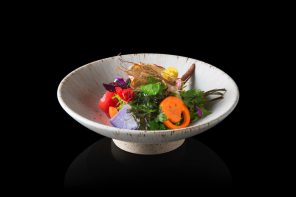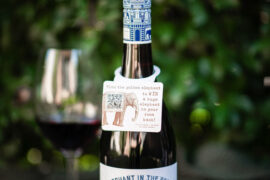Published in TradeSmart, issue 3.
From one extreme to the other, both a city of eccentrics and a city of culture, Amsterdam is a vibrant, exciting destination for those wanting to experience European culture and history mixed with a spirited dash of contemporary and alternative experiences.
Since the glory days of the Renaissance when Amsterdam led the world in free thinking, intellectual activity and pragmatic business success, this small city of 800,000 people has welcomed visitors and outsiders with open arms.
The 17th century canals, lined with stunningly beautiful historic mansions and warehouses, are a testimony to the Golden Age of Amsterdam, when it was home base to traders and explorers who travelled to the far corners of the globe, bringing wealth along with spices, tulips and other exotic wonders to the city.
Some of Amsterdam’s grand buildings have been converted into fine tourist accommodation, such as the Pulitzer Hotel which is housed in 25 restored canal houses, or the Grand Hotel Krasnopolsky, in the heart of Dam Square, facing the Queen’s Palace. If you can’t afford to stay there, you can always drink a strong Dutch coffee or a glass of jenever on the hotel terrace, and hope for a glimpse of Queen Beatrix or her family.
Other fine buildings now house outstanding museums, including the Rijksmuseum, the Stedelijk Museum and the Rembrandt House Museum, attractions not to be missed for their wonderful collections of art. The Rijksmuseum is world-renowned for its enormous collection of works by Dutch masters such as Jan Steen, Frans Hals, Vermeer and Rembrandt, as well as its porcelain, silver, furniture and dollhouses.
You will also want to join the queue to visit the Van Gogh Museum which houses the largest collection of Van Gogh’s paintings and drawings in the world. Hire some earphones and enjoy viewing the collection at your own pace.
A more poignant experience, and one embedded in more recent history, is the Anne Frank House. This stark reminder of the dark days and inhumanity of World War Two brings to life the story of Anne Frank and her family. Anne wrote her famous diary while her family hid in this house from the Nazis. She died in a concentration camp shortly before her 16th birthday. For many tourists, the house is an unforgettable highlight of their time in Amsterdam.
Amongst the culture and the history of this beautiful city, there is also a vivid contemporary culture ranging from high fashion and pop art to music, dance and counter-culture. The famous red-light district, de Wallen, is an attraction even for those not wishing to avail themselves of its services. Providing you take the same precautions as anywhere, it is generally safe to walk around, but definitely don’t take photographs or you could regret it.
There’s a very popular Sex Museum here, one of many off-beat museums in the city. Others include a toilet museum, moneybox museum and museums on cats, coffee and tea, eyeglasses, and the Bible. Centred around de Wallen, but also elsewhere in the city, coffee shops sell cannabis. This is not completely legal but is tolerated when small quantities of cannabis are involved. Also an experience are the “brown cafés”, so named because they are brown with age and cigarette smoke.
Beer lovers will enjoy the Heineken Experience at the original Heineken brewery where you learn about the art of brewing, take a virtual ride through Amsterdam on a beer delivery truck and get to try some beers for yourself. Be dazzled by diamonds at the Gasson diamond factory, where you can take a free guided tour and watch the diamond cutters and polishers at work.
Amsterdam is flat and compact, so walking is the best way to savour its lively atmosphere. Rings of canals wind their way through the city, and you can follow the Herengracht (the grand canal) and the Prinsengracht to discover curious little shops, cafés and bars.
Consider hiring a bike or taking a walking tour to delve into the city’s alley ways and hidden courtyards. If time is short and you want a quick overview of the city, a canal tour by boat is the way to go. Departing from Central Station, the cruises provide a great view of the bustling city by day, and a pretty view at night when the bridges are lit up.
Short trips can be made from Amsterdam by the very convenient and efficient train service to nearby cities such as Delft, the home of the famous blue porcelain, the cheese markets of Alkmaar, and the stately political capital, The Hague.
The bulb fields of Keukenhof explode into colour between March and May, while Zaanse Schaans is a traditional Dutch village that has much to do and see, including a cheese making factory and clog factory, within easy reach of Amsterdam.
© Christine Salins




